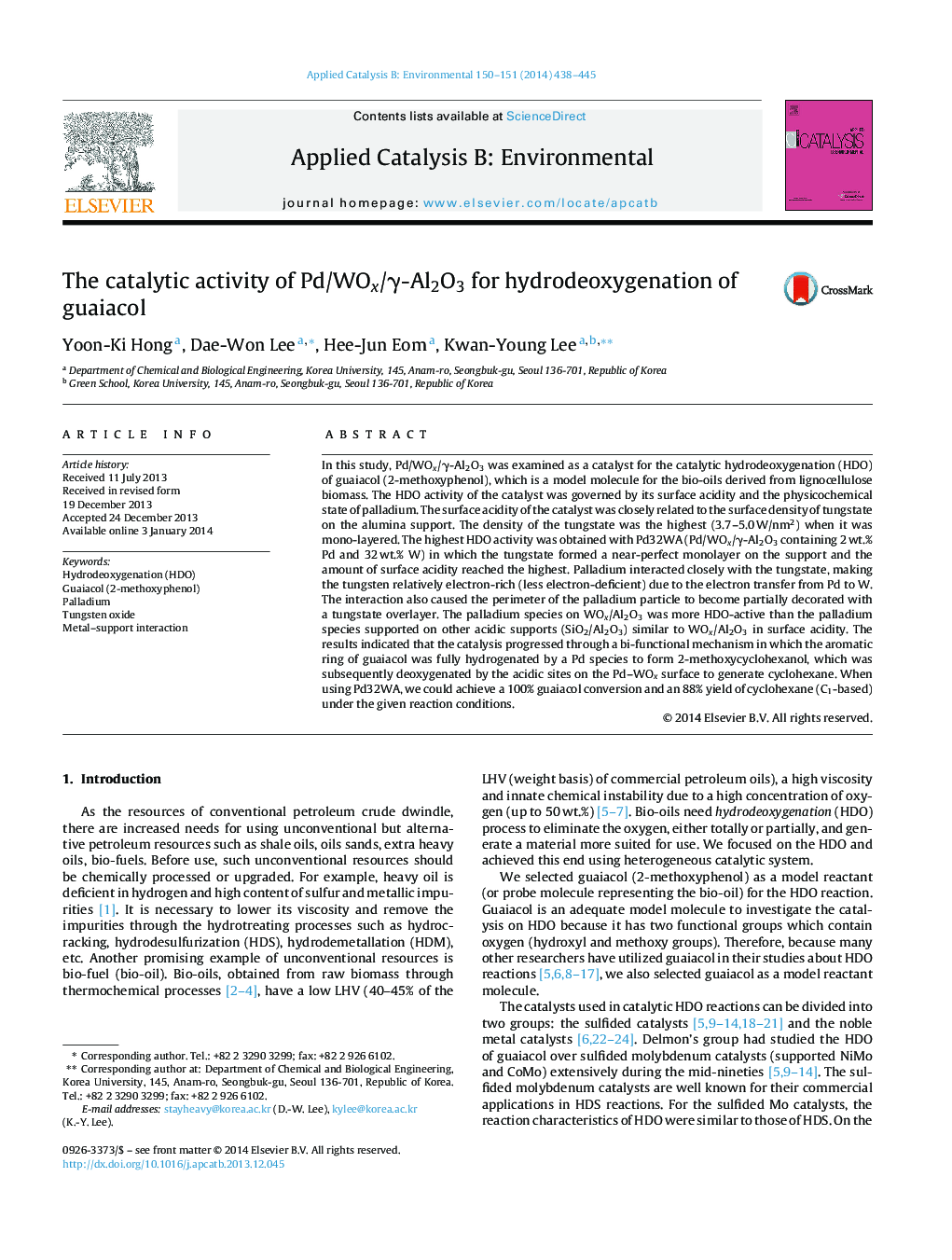| کد مقاله | کد نشریه | سال انتشار | مقاله انگلیسی | نسخه تمام متن |
|---|---|---|---|---|
| 45950 | 46427 | 2014 | 8 صفحه PDF | دانلود رایگان |

• Hydrodeoxygenation of guaiacol represents the chemical upgrading of lignin-originated bio-oils.
• Pd/WOx/Al2O3 was applied to hydrodeoxygenation of guaiacol.
• High yield of cyclohexane was obtained with Pd/WOx/Al2O3.
• The catalysis followed a bifunctional, hydrogenation–deoxygenation mechanism.
• The activity of catalyst depended on the state of palladium and an acid property of support.
In this study, Pd/WOx/γ-Al2O3 was examined as a catalyst for the catalytic hydrodeoxygenation (HDO) of guaiacol (2-methoxyphenol), which is a model molecule for the bio-oils derived from lignocellulose biomass. The HDO activity of the catalyst was governed by its surface acidity and the physicochemical state of palladium. The surface acidity of the catalyst was closely related to the surface density of tungstate on the alumina support. The density of the tungstate was the highest (3.7–5.0 W/nm2) when it was mono-layered. The highest HDO activity was obtained with Pd32WA (Pd/WOx/γ-Al2O3 containing 2 wt.% Pd and 32 wt.% W) in which the tungstate formed a near-perfect monolayer on the support and the amount of surface acidity reached the highest. Palladium interacted closely with the tungstate, making the tungsten relatively electron-rich (less electron-deficient) due to the electron transfer from Pd to W. The interaction also caused the perimeter of the palladium particle to become partially decorated with a tungstate overlayer. The palladium species on WOx/Al2O3 was more HDO-active than the palladium species supported on other acidic supports (SiO2/Al2O3) similar to WOx/Al2O3 in surface acidity. The results indicated that the catalysis progressed through a bi-functional mechanism in which the aromatic ring of guaiacol was fully hydrogenated by a Pd species to form 2-methoxycyclohexanol, which was subsequently deoxygenated by the acidic sites on the Pd–WOx surface to generate cyclohexane. When using Pd32WA, we could achieve a 100% guaiacol conversion and an 88% yield of cyclohexane (C1-based) under the given reaction conditions.
The catalyst composed of noble metal and acidic support is bi-functional: hydrogenation of aromatic ring and deoxygenation of oxygenated branch. Pd/WOx/Al2O3 catalyst is especially active in this reaction mechanism due to the close interaction between Pd and WOx.Figure optionsDownload as PowerPoint slide
Journal: Applied Catalysis B: Environmental - Volumes 150–151, 5 May 2014, Pages 438–445